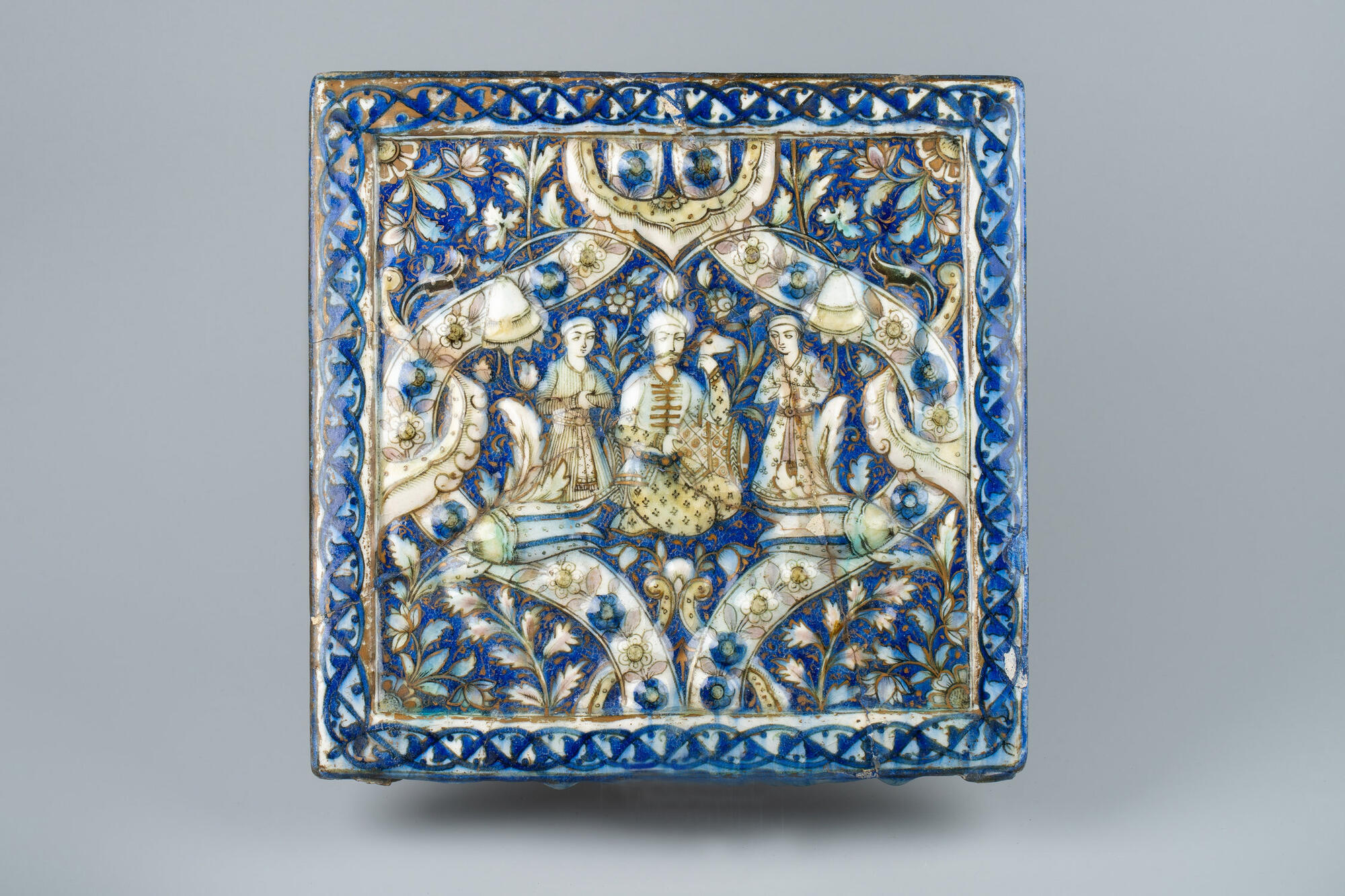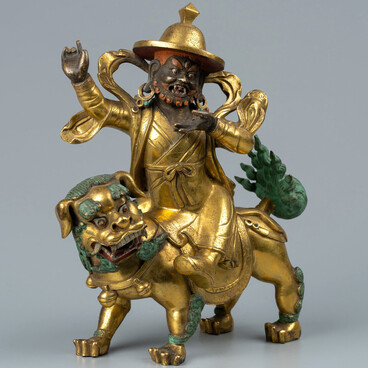The Samara Regional Art Museum presents one of the best examples of Iranian ceramics — a relief tile panel with a composition on the theme of the Garden of Eden. It is painted in underglaze cobalt-blue and decorated with rich ornaments. Tulips, carnations and other flowers adorn the medallion with the image of a sitting young man and two beautiful maidens.
Ceramic household items exist in one form or another in all cultures. In some cultures, they serve a purely utilitarian purpose, while in others they turn into magnificent artworks.
Ceramic art plays an important role in the East, especially in Iran. Iranian ceramists have made a huge contribution to world culture and art. Ceramic products are an integral part of interior design of residential and religious buildings. Ceramic ware is present in mosques in the form of incense burners, tiles decorating the mihrab (a niche in the wall of the mosque indicating the direction to Mecca), as well as in houses of people with completely different incomes: it could be, for example, a rice bowl or an exquisite hookah.
Traditional ceramics is a phenomenon in which two parts are organically connected — the form and content. The tiles have nothing accidental or secondary in them, no elements whose function was reduced only to a decorative purpose in the modern sense.
The process of making ceramic products can be divided into three main technological phases: finding and preparing raw materials, making the items and firing. Certain rituals corresponded to each of the phases. Many technological achievements of Iranian ceramists are unique and irretrievably lost. In fact, all the richness of architectural ceramics and tiles from other countries — Hispano-Moresque ware, Pyrenean azulejos, Italian majolica, Turkish iznik ware — has Iranian roots. Iran is the progenitor of modern ceramics and majolica, which was masterfully reworked by talented ceramists all around the world who give it its own sound and uniqueness.
Ceramic household items exist in one form or another in all cultures. In some cultures, they serve a purely utilitarian purpose, while in others they turn into magnificent artworks.
Ceramic art plays an important role in the East, especially in Iran. Iranian ceramists have made a huge contribution to world culture and art. Ceramic products are an integral part of interior design of residential and religious buildings. Ceramic ware is present in mosques in the form of incense burners, tiles decorating the mihrab (a niche in the wall of the mosque indicating the direction to Mecca), as well as in houses of people with completely different incomes: it could be, for example, a rice bowl or an exquisite hookah.
Traditional ceramics is a phenomenon in which two parts are organically connected — the form and content. The tiles have nothing accidental or secondary in them, no elements whose function was reduced only to a decorative purpose in the modern sense.
The process of making ceramic products can be divided into three main technological phases: finding and preparing raw materials, making the items and firing. Certain rituals corresponded to each of the phases. Many technological achievements of Iranian ceramists are unique and irretrievably lost. In fact, all the richness of architectural ceramics and tiles from other countries — Hispano-Moresque ware, Pyrenean azulejos, Italian majolica, Turkish iznik ware — has Iranian roots. Iran is the progenitor of modern ceramics and majolica, which was masterfully reworked by talented ceramists all around the world who give it its own sound and uniqueness.



